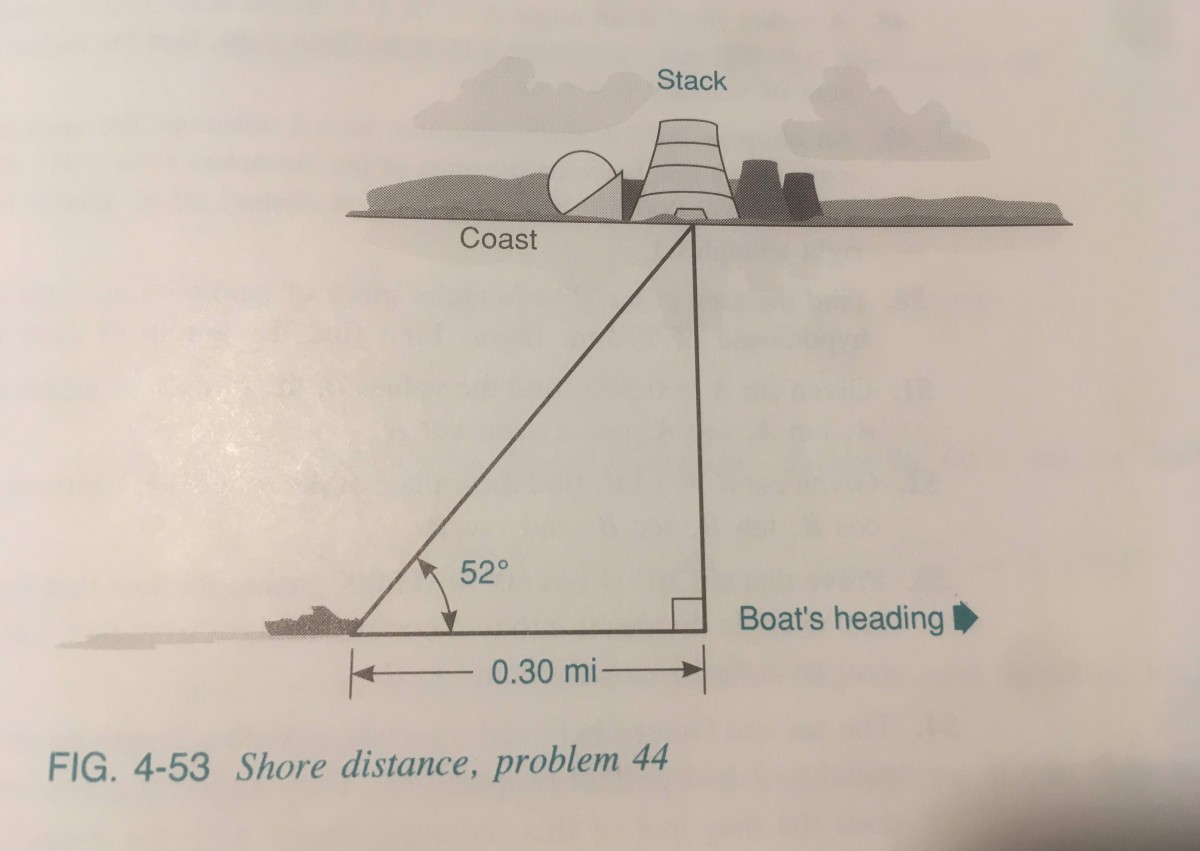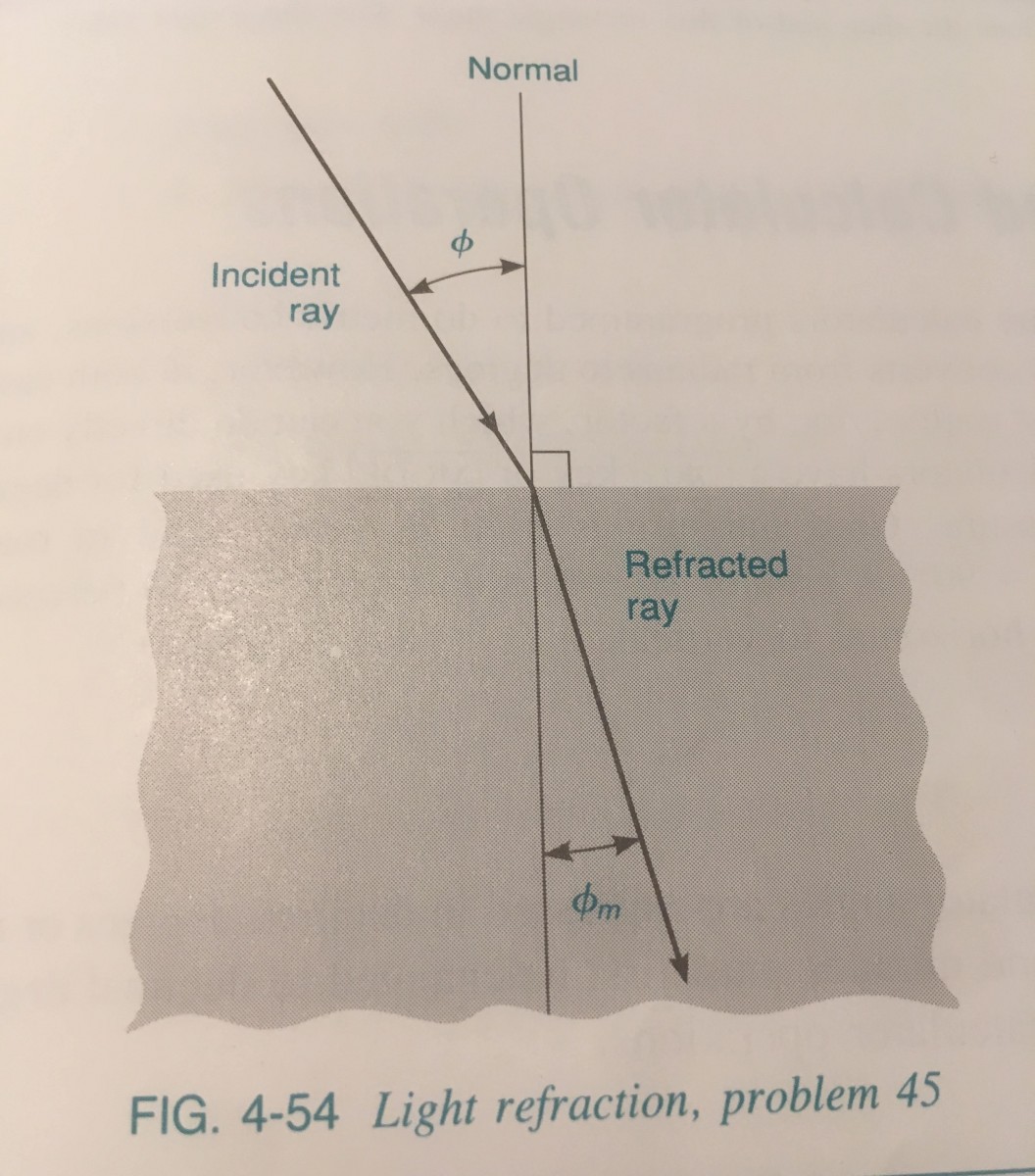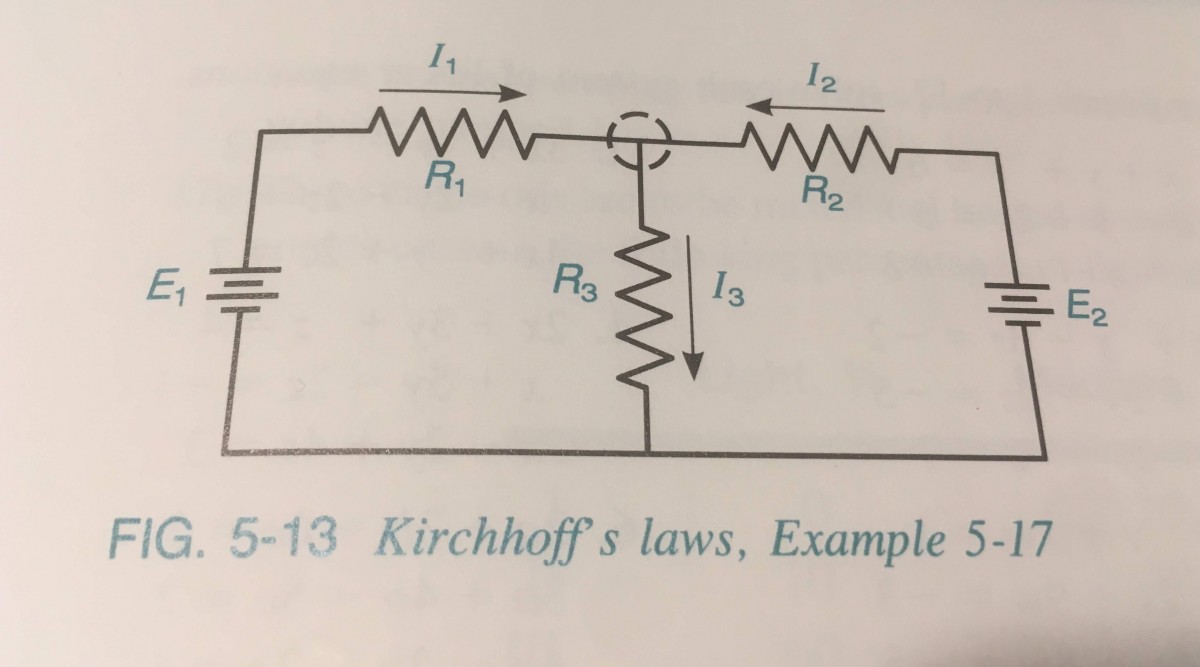The following problems come from Arthur Kramer’s Fundamental of Technical Mathematics, second edition. With permission from Professor Kramer and from the Math Department Curriculum Committee, I will request these problems be adapted for the appropriate WeBWorK homework sets in MAT 1275. If anyone has comments, further requests, or suggestions, please let me know.
-
page 166 #44 (figure page 167)
Enrique is traveling parallel to a straight coastline in his motorboat and wants to find his distance from the shore Using a compass, he takes the bearing of the stack of a power plant and measures the angle between his heading and the stack to be 52 degrees. After he travels 0.30 mi, the angle between his heading and the stack is 90 degrees. How far is he from the coast?

-
page 166 #43 (figure page 167)
The index of refraction of a medium is defined as the ratio of the speed of light c in air to the speed of light c_m in the medium. It is equal to:
where

-
Adapted from Example 5-17 page 197 (figure page 197)
 Kirchoff’s laws for the circuit in the figure yield the following three linear equations
Kirchoff’s laws for the circuit in the figure yield the following three linear equationswhere
Let
-
The earth’s orbit around the sun and the moon’s orbit around the earth are approximate circles of radii
(a) on the positive
(b) in the first quadrant on the line
-
Page 284 #98
The velocity
Simplify and combine the terms, expressing



Leave a Reply